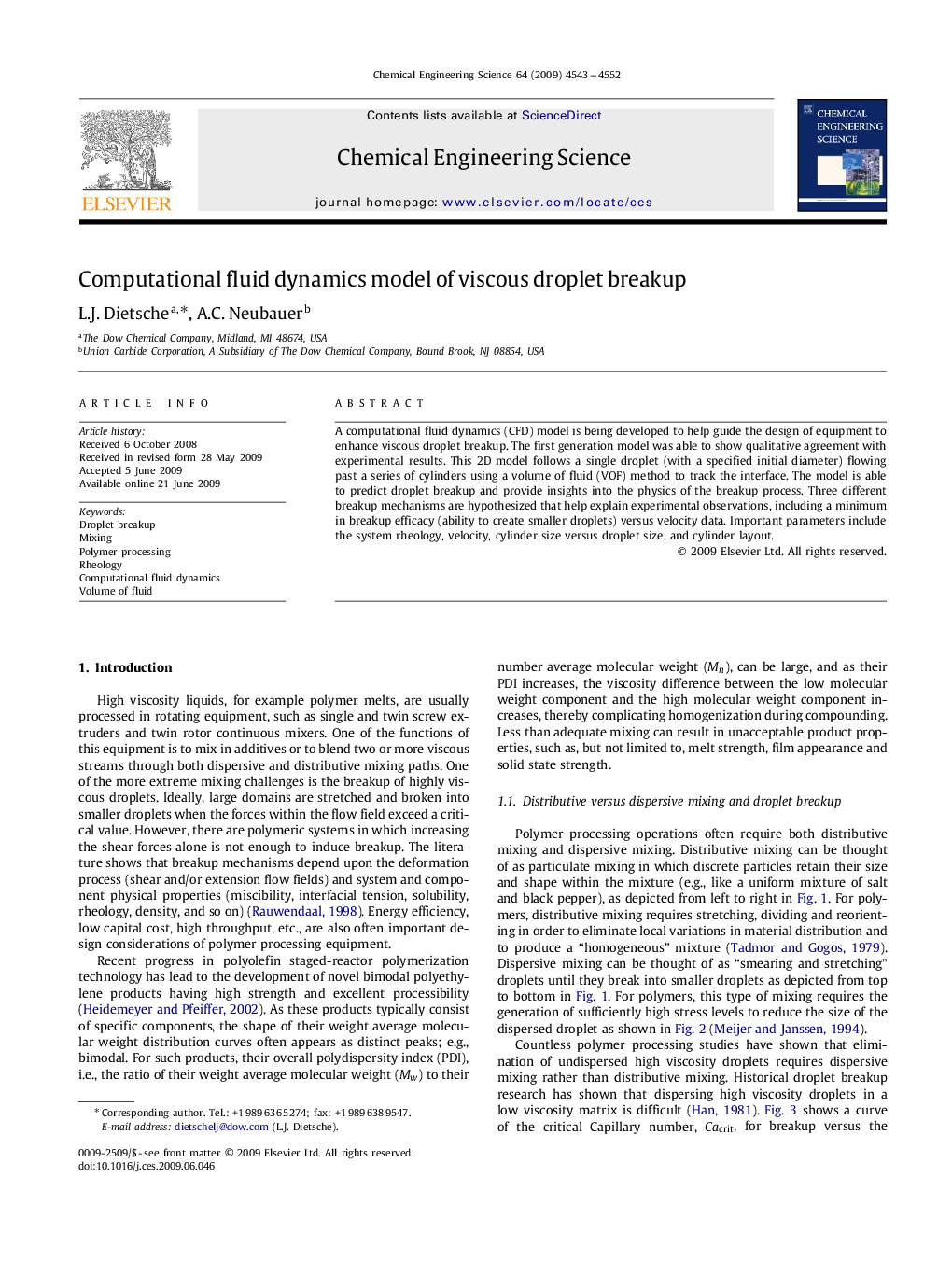| Article ID | Journal | Published Year | Pages | File Type |
|---|---|---|---|---|
| 157329 | Chemical Engineering Science | 2009 | 10 Pages |
A computational fluid dynamics (CFD) model is being developed to help guide the design of equipment to enhance viscous droplet breakup. The first generation model was able to show qualitative agreement with experimental results. This 2D model follows a single droplet (with a specified initial diameter) flowing past a series of cylinders using a volume of fluid (VOF) method to track the interface. The model is able to predict droplet breakup and provide insights into the physics of the breakup process. Three different breakup mechanisms are hypothesized that help explain experimental observations, including a minimum in breakup efficacy (ability to create smaller droplets) versus velocity data. Important parameters include the system rheology, velocity, cylinder size versus droplet size, and cylinder layout.
